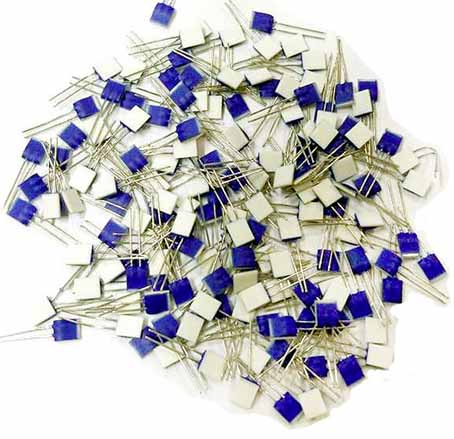What is platinum resistance?
Platinum resistance, abbreviated as: platinum thermal resistance, its resistance will change with temperature changes. It has PT100 and PT1000 series products. It is suitable for high-precision temperature equipment such as medical treatment, electrical machinery, industry, temperature calculation, satellite, meteorology, resistance calculation and so on. The scope of application is very wide.

(2) When 0℃≤t≤850℃, RPt100=100(1+At+B) (2-2)
In the formula, A=3.90802×; B=-5.80×; C=-4.2735×.
The main technical parameters of Pt100 temperature sensor are as follows:
Measuring range: -200℃~+850℃; allowable deviation △℃:
Class A ±(0.15+0.002│t│). Class B±(0.30+0.005│t│);
Thermal response time "30s;
The minimum insertion depth of the resistance: the minimum insertion depth of the thermal resistance is ≥200mm;
Let-through current ≤ 5mA. In addition, the Pt100 temperature sensor also has the advantages of anti-vibration, good stability, high accuracy, and high pressure resistance.
The working principle of PT100: When PT100 is at 0 ℃, its resistance value is 100Ω, and its resistance value will increase at a uniform rate as the temperature rises.
Index table
-50℃, 80.31Ω
-40°C, 84.27Ω
-30°C, 88.22Ω
-20°C, 92.16Ω
-10℃ ,96.09Ω
0℃ ,100.00Ω
10℃,103.90Ω
20°C, 107.79Ω
30°C, 111.67Ω
40°C, 115.54Ω
50℃, 119.40Ω
60°C, 123.24Ω
70°C, 127.08Ω
80°C, 130.90Ω
90°C, 134.71Ω
100°C, 138.51Ω
110°C, 142.29Ω
120°C, 146.07Ω
130°C, 149.83Ω
140°C, 153.58Ω
150°C, 157.33Ω
160°C, 161.05Ω
170°C, 164.77Ω
180°C, 168.48Ω
190℃, 172.17Ω
200°C, 175.86Ω
The resistance value will increase regularly with the uniform temperature.

component
Common Pt100 temperature sensing components include ceramic components, glass components, and mica components. They are made of platinum wire wound on ceramic support, glass support, and mica support respectively, and then processed by complex processes.Thin film platinum resistance
Thin-film platinum resistance: using vacuum deposition thin-film technology to sputter platinum on the ceramic substrate, the film thickness is within 2 microns. The Ni (or Pd) lead is fixed with glass sintering material, and the thin film element is made by laser trimming.Characteristics of platinum resistance
(1) -200℃<t<0℃, RPt100=100[1+At+B +Ct(t-100)] (2-1)(2) When 0℃≤t≤850℃, RPt100=100(1+At+B) (2-2)
In the formula, A=3.90802×; B=-5.80×; C=-4.2735×.
The main technical parameters of Pt100 temperature sensor are as follows:
Measuring range: -200℃~+850℃; allowable deviation △℃:
Class A ±(0.15+0.002│t│). Class B±(0.30+0.005│t│);
Thermal response time "30s;
The minimum insertion depth of the resistance: the minimum insertion depth of the thermal resistance is ≥200mm;
Let-through current ≤ 5mA. In addition, the Pt100 temperature sensor also has the advantages of anti-vibration, good stability, high accuracy, and high pressure resistance.
PT100 design principle
The 100 after PT means that its resistance value is 100Ω at 0°C, and its resistance value is about 138.5Ω at 100°C.The working principle of PT100: When PT100 is at 0 ℃, its resistance value is 100Ω, and its resistance value will increase at a uniform rate as the temperature rises.
Index table
-50℃, 80.31Ω
-40°C, 84.27Ω
-30°C, 88.22Ω
-20°C, 92.16Ω
-10℃ ,96.09Ω
0℃ ,100.00Ω
10℃,103.90Ω
20°C, 107.79Ω
30°C, 111.67Ω
40°C, 115.54Ω
50℃, 119.40Ω
60°C, 123.24Ω
70°C, 127.08Ω
80°C, 130.90Ω
90°C, 134.71Ω
100°C, 138.51Ω
110°C, 142.29Ω
120°C, 146.07Ω
130°C, 149.83Ω
140°C, 153.58Ω
150°C, 157.33Ω
160°C, 161.05Ω
170°C, 164.77Ω
180°C, 168.48Ω
190℃, 172.17Ω
200°C, 175.86Ω
The resistance value will increase regularly with the uniform temperature.





